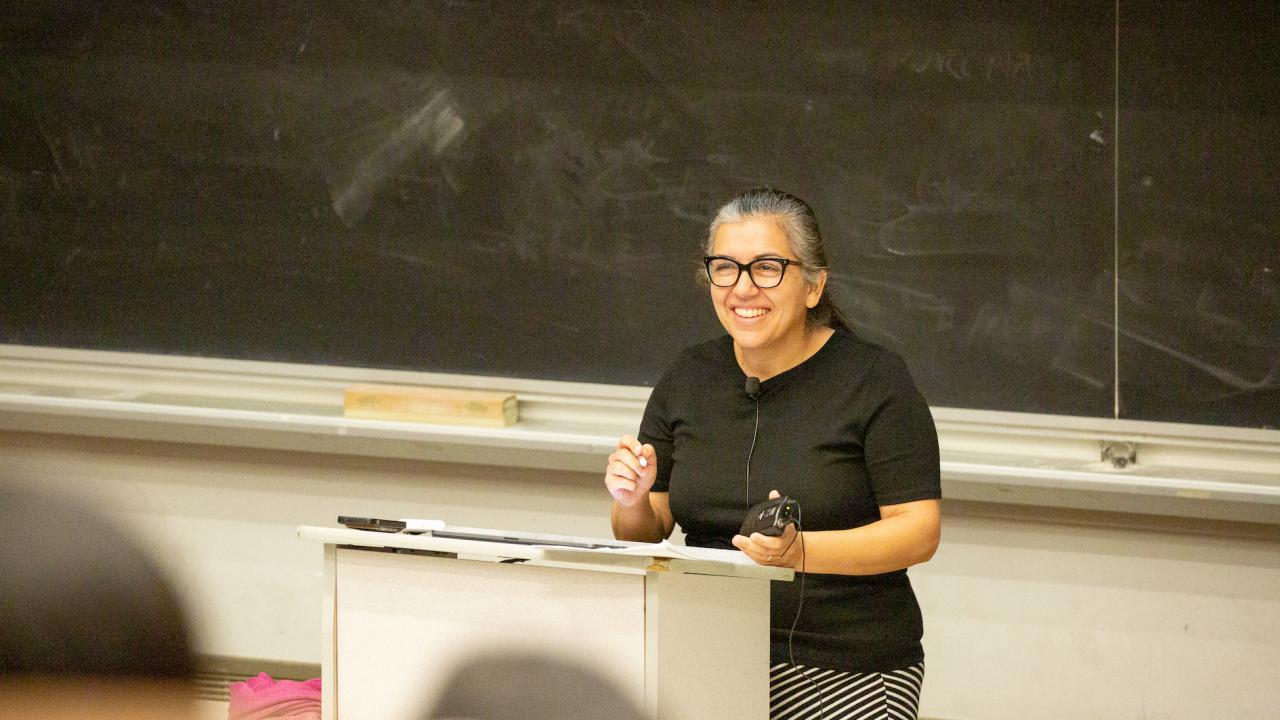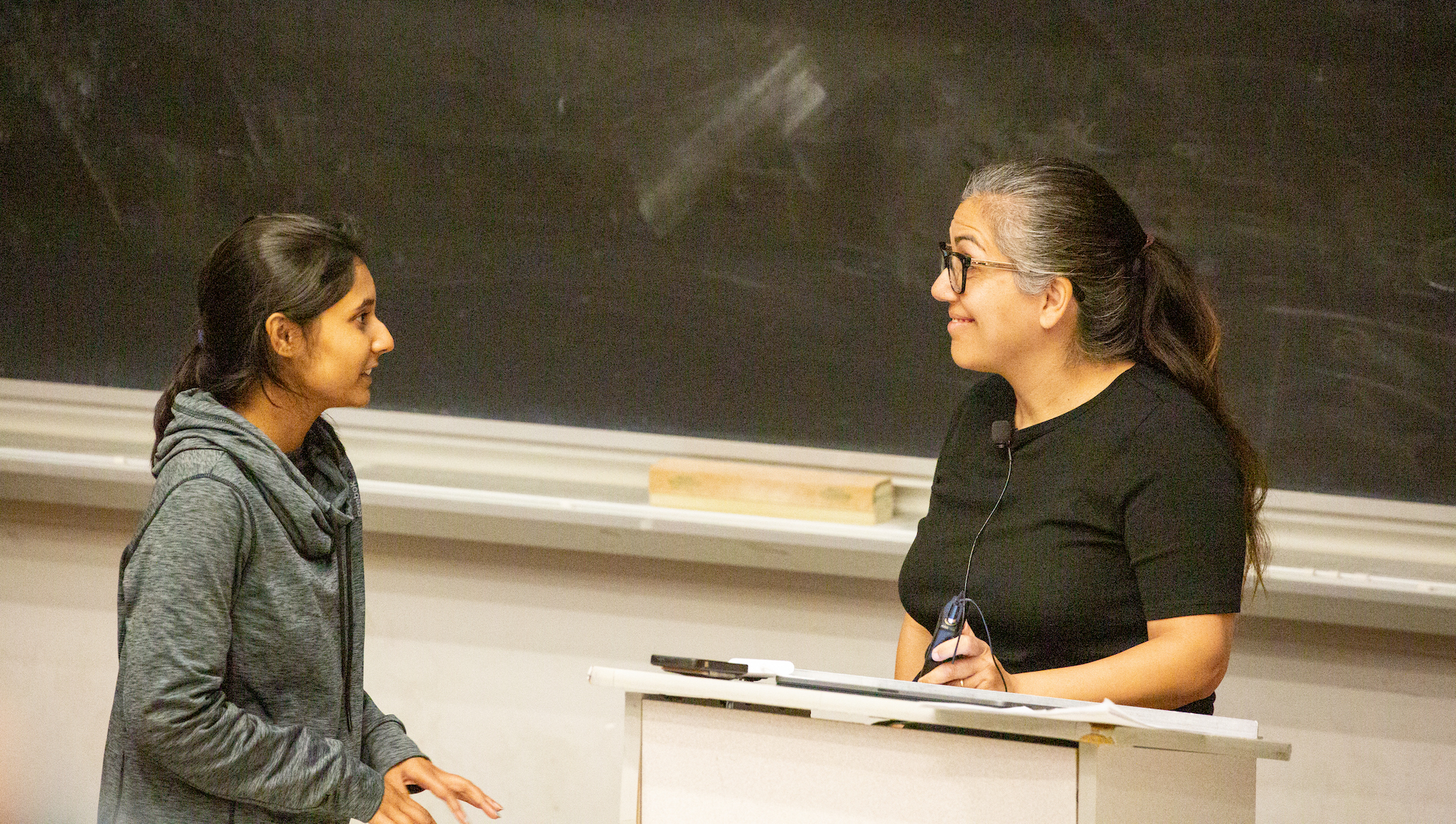
Four simple ways to improve teaching through reflection
By Mona Monfared, Assistant Professor of Teaching in Molecular and Cellular Biology
I was thrilled that CEE declared 2019 the year of reflective teaching. I love the concept of themed years (one of my most favorite being Year of the Trial Sized Dove Bar, RIP David Foster Wallace) and I have been preaching the benefits of self-reflection to every class I have taught at UC Davis with slides on day one of each quarter. Combining two things I already liked was bound to be a hit for me (especially when it included getting a cute notebook for free) but when I started reflecting on how I have reflected on my teaching practices, a theme popped up that was really interesting for me to realize:
When it comes to self-reflection, I’ve been making the students do the heavy lifting.
When I jotted down the four main ways that I have reflected on my instructional practices since I have come to UC Davis, I became aware that I mainly reflect by using my students as a mirror. A goal for this year is to incorporate more self-reflection in the style of daily/weekly journal entries right after class during the quarter, but in thinking about what I have done in the past, I have typically relied heavily on my students.
It has been powerful, unexpected, and inspiring. Some of the methods take very little effort, while others take a bit more time, effort, or planning. All of them have been fruitful. They have all helped me create an inclusive classroom by letting students know that I am listening and willing to adjust, helping me model the qualities I want to foster in them. And all of the methods have (at some point) given me that inspiring jolt that discovering something unexpected can give you. So here they are, in order of what I think is “easiest” (takes little or no planning) to more involved (either in up front planning time or in the execution).
1. CEE Mid Quarter Inquiry and consultations
If you haven’t done either an MQI or a CEE consultation yet, I highly recommend it. MQIs give you tons of data, straight from the students, with no effort on your part, and it gets summarized and debriefed to you by a CEE educational specialist. Consultations have also been hugely helpful for me -- a consultation I had with Patricia Turner (CEE Education Specialist), where she asked me all the right questions to help me reflect on my writing assignment, helped me realize the type of writing I was asking my students to do (exploratory writing) and that my rubric was actually not aligned with my goals.
2. Muddiest Point/Clearest Point in-class activity
I have used this active learning strategy to both gauge what has come across clearly (Clearest Point) and what students still have questions on (Muddiest Point). I hand out index cards to my class (my smallest class has been 195 students and my largest class has been 429) and ask students to write the clearest point on one side and the muddiest point on the other. If they don’t have a clear or muddy point, I ask them to draw a picture for fun (it is a cheap decorating idea for my office). Every time I do this, I learn something new. It doesn’t take long to flip through the index cards and tally the most common responses by category (you can also ask a TA to do this, but I enjoy seeing the individual responses). I can address the most common muddiest points at the beginning of next class period or I make a video that addresses nearly all of the common muddy points (to make videos, I started off using Doceri and now I use Explain Everything). At the very least, I can make adjustments to the way I present the information the next time I give that lecture. Instead of asking myself if I got the main points across in a lecture, I can easily ask every student -- even if there are over 200 in the classroom.
I make a video that addresses nearly all of the common muddy points

3. Surveying Students: Use Data to Determine What’s Working
Prior to coming to UC Davis, I was an instructor at a smaller university and I always had writing assignments in my courses, whether I was teaching upper division (Cell Biology, Genetics) or lower division (Intro to Molecular and Cellular Biology). When I came to Davis in 2015 and I started teaching BIS102 (Structure and Function of Macromolecules), I didn’t want to give up on including writing in the course, even though my classes were now at least four times larger than what I had previously taught. To navigate this new terrain, I relied on my students, again, to guide me and help me reflect on what worked and what didn’t. After every quarter that I have taught BIS102, I have sent out a survey to the students to ask them about different aspects of the assignment: Did they enjoy it? Did they find it valuable for developing their reading skills? You can see the types of questions I included in this survey here. It was incredibly useful to get this insight. For one, my perception (based on verbal complaints or just moans/groans I heard at office hours or in the lecture hall) was that the students did not like writing or the assignment. I would have ditched the assignment after the first quarter if I hadn’t sent out the survey and seen that, despite all the hiccups of giving and grading the assignment for the first time (using peer grading nonetheless), a majority of the class appreciated writing in an upper division course. I was surprised and pleased, and I was energized to keep trying. The percentage of students appreciating the opportunity to write in an upper division course has increased every quarter I have had the assignment since then. Their answers have helped me guide my instructional decisions with data.
4. Analyzing student responses on written exam questions
My mentor, Charles Gasser, taught BIS102 for 29 years and no matter how big his courses got, he always wrote these fantastic written-response exam questions. I wanted to continue this tradition. Grading these types of questions can be a challenge in a class of 350 students, but the information that can come up in a written response on an exam is vast and nuanced. All of those student answers are data, information sitting on the page waiting to be analyzed. I was lucky enough to have an undergraduate mentee who was up for the challenge of taking this data and using it to help me learn more about how students were approaching problems and what was causing them to lose points when they did. Alexandra Greb, who is now at UC Irvine for medical school, helped me “code” this qualitative data so that we could observe patterns. We used this as part of a larger reflective practice that we outlined in a paper published by the Association of Assessment in Higher Learning in their journal, Intersection. We analyzed several test questions in this way. It was absolutely illuminating to go beyond the exam average and distribution. Discovering where students lost points helped me refine my rubric (in one case, I realized my grading rubric was giving points for something I had not dedicated any class time to – a big misalignment!) and decide what concepts needed more scaffolding in future classes. It can help me write better questions that are more aligned with my stated learning outcomes. If done within the quarter, it could help correct misalignments before the final exam hits and lets you learn about your students as you have them in your class.
UC Davis students are a generous, community-spirited, and gracious bunch. At every effort I have taken, they have been appreciative and supportive. They let me model the qualities I find most important for scholars – being okay with not knowing, learning, reflecting, adjusting, and listening. It is no surprise that in reflecting on how I reflect, I find that I have been using this great community of people to help me see myself in order to become better at what I love doing.
